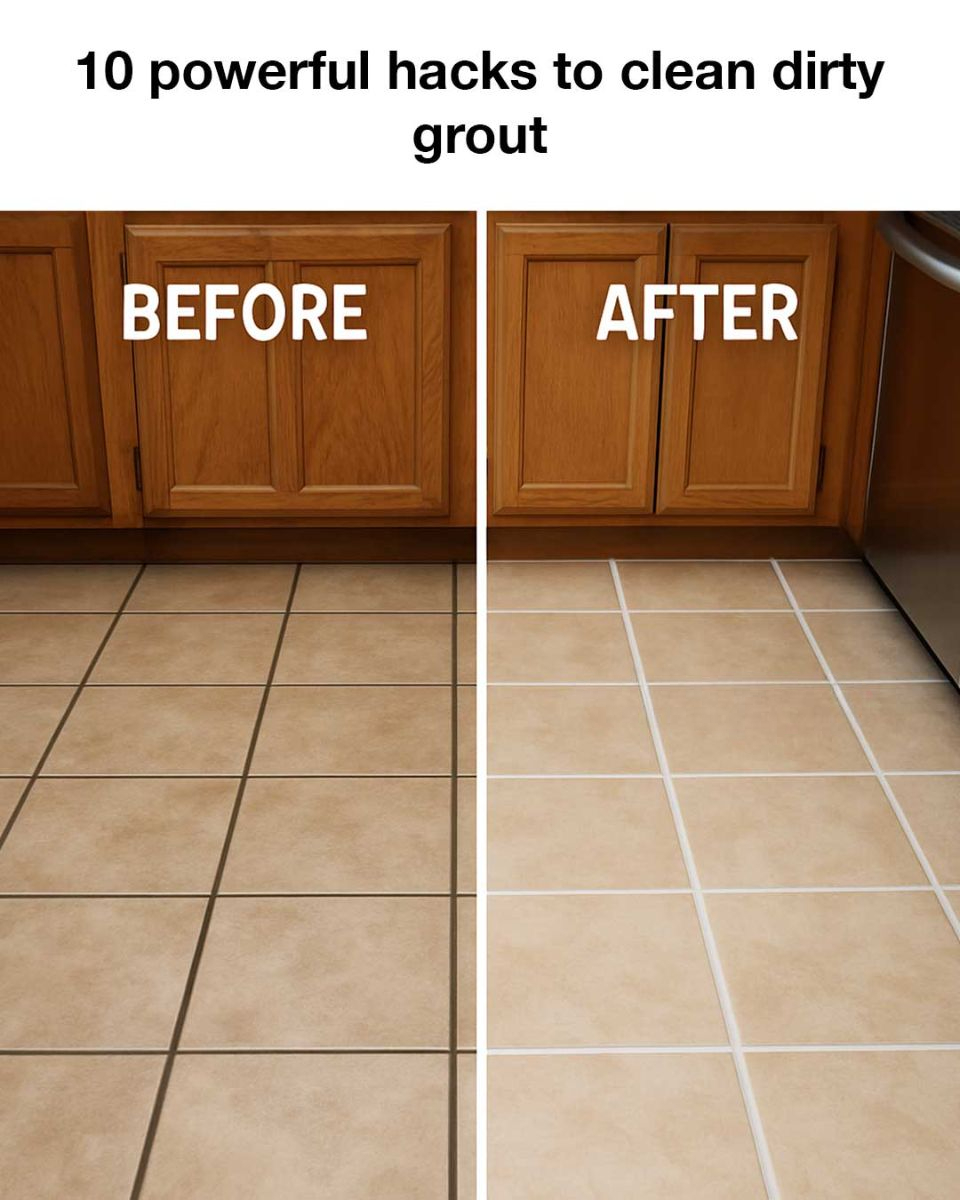Grout, the filler material between tiles, often doesn’t get the attention it deserves—until it starts to look dirty, discolored, or downright grimy. Thanks to its porous texture, grout absorbs spills, dirt, mold, and mildew easily, especially in high-humidity spots like bathrooms and kitchens. Unlike smooth tile surfaces that wipe clean with ease, grout’s rough lines trap grime and require more than just a basic cleaning wipe. While cleaning grout might seem like an annoying task, keeping it clean is essential not just for aesthetics but for the health of your home. Dirty grout can harbor mold and bacteria, which may worsen allergies and degrade indoor air quality.

Over time, if ignored, it can even cause damage to the grout itself, leading to cracked or loose tiles, which means potentially costly repairs. Fortunately, you don’t need to shell out money for professional services—there are simple yet powerful DIY hacks to restore grout to its original condition. One classic and affordable cleaning method involves making a paste from baking soda and water, applying it along the grout lines, and then spraying or pouring vinegar over it. The chemical fizzing action helps lift grime from the surface. After letting it sit for a few minutes, scrubbing with a stiff brush and rinsing reveals noticeably cleaner grout. Another great solution is mixing hydrogen peroxide and baking soda into a thick paste. This mixture is especially effective for whitening grout and removing stubborn stains.
Just apply it to the grout, let it rest for about ten minutes, scrub, and rinse thoroughly. It also works well against mold and mildew without damaging most types of grout. For those who want something that not only cleans but also leaves a fresh scent, consider mixing lemon juice with borax. Lemon juice has natural bleaching properties and a pleasant citrus aroma, while borax provides a gentle abrasiveness to lift dirt. Apply this mixture to the grout, let it sit for about 10–15 minutes, scrub it clean, and rinse it off for sparkling results. When dealing with extensive areas or deeply embedded grime, steam cleaning is a highly effective, chemical-free option.
A steam cleaner with a specialized grout nozzle can penetrate deep into grout lines, loosening dirt and killing mold spores and bacteria in the process. It’s especially helpful in areas that see a lot of moisture or foot traffic, though it’s essential to make sure your tile and grout can withstand steam without damage. If the natural route doesn’t yield the results you want, oxygen bleach is a more powerful alternative. It’s safer on colored grout than traditional chlorine bleach and still packs a punch against tough stains. Mix it with warm water per the product instructions, apply it, let it soak for up to 30 minutes, scrub, and rinse well. Commercial grout cleaners are also worth considering.
These are specially formulated to target different problems, like mold, soap scum, or oily buildup. Choose one that’s safe for your specific grout and tile, and always follow the instructions carefully to avoid damage or discoloration. Sometimes the most basic tools can work wonders—a simple toothbrush and dish soap make a surprisingly effective team. The toothbrush’s small bristles can reach into tight grout lines, and the dish soap cuts through oily residue and grime. This method works great for quick cleanups or spot treatments between deeper cleanings. For larger jobs or to save time, try a grout brush attachment for a power drill. These attachments bring serious scrubbing power, making the job faster and less physically demanding. Just apply your chosen cleaner, attach the brush to the drill, and let it do the heavy lifting. After you’ve cleaned your grout, don’t forget to protect it with a sealer. Grout sealers create a barrier that blocks out moisture, dirt, and stains, helping your grout stay clean longer. Apply with an applicator or small brush and reapply every six to twelve months for best results. To keep your grout looking fresh, make regular maintenance part of your routine. Sweep or vacuum tiled areas to prevent dirt from settling into the grout, clean up spills as they happen, and use a mild cleaner for weekly touch-ups. For areas that have faded or lost their color, a grout pen can be a fast and easy solution to restore its appearance. By using these ten practical grout-cleaning hacks, you can tackle stubborn dirt and keep your tiled areas looking fresh all year long. Whether you prefer natural DIY mixtures or high-powered tools, the key to great-looking grout is consistency and care.




